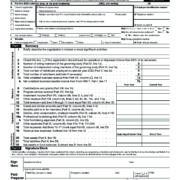Alert – The Tax Cuts and Jobs Act of 2017 Will Sunset in 2025!
In case you didn’t know — the Tax Cuts and Jobs Act (TCJA) of 2017 will sunset in 2025. As we slowly approach the sunset date, taxpayers must be aware of which provisions are expiring so they take the steps needed to maximize their tax savings to prepare for the TCJA sunset.
Things Individuals Should Know if the TCJA Sunsets as Scheduled
Here’s what individuals (1040s) should know if the provisions sunset as currently scheduled.
Individual Tax Rates:
The TCJA lowered tax rates to 10%, 12%, 22%, 24%, 32%, 35%, and 37%. The top rate decreased to 37% from 39.6%. These tax rates are set to sunset on December 31, 2025. Beginning January 1, 2026, the top tax rate will revert to 39.6%. This change will likely result in higher tax bills for many taxpayers, particularly those in higher income brackets.
Standard Deduction
The TCJA nearly doubled the standard deduction for all filing statuses. For example, it increased to $12,000 for single filers and $24,000 for married filing jointly. As a result, many taxpayers have opted not to itemize deductions. However, starting in 2026, the standard deduction will be about half of what it is currently, adjusted for inflation. This significant reduction may cause more taxpayers to return to itemizing deductions.
The TCJA’s sunset also implicates several credits and other pertinent amounts and thresholds. One notable example is the child tax credit. The TCJA increased the child tax credit from $1,000 to $2,000 per qualifying child. This higher tax credit will revert to pre-TCJA levels in 2026, returning to $1,000 per qualifying child. This change could significantly impact families with children, potentially increasing their tax liability.
How Individuals Can Prepare For the TCJA Sunset
To prepare for these pending changes, taxpayers should consider taking the following steps:
- Tax planning: Understanding what you may be expected to pay under the new tax structure is essential. This may involve projecting your income and deductions for 2026 and beyond and calculating your potential tax liability under the new rates and rules.
- Withhold more federal income tax from your paycheck: You can submit Form W-4 to your employer to adjust your withholdings. By increasing your withholdings now, you can avoid a potential shock when filing your 2026 taxes.
- Invest in your retirement accounts to obtain the maximum tax credits: Maximizing contributions to tax-advantaged retirement accounts like 401(k)s and IRAs can help reduce your taxable income and potentially keep you in a lower tax bracket.
Things Businesses Should Know if the TCJA Sunsets as Scheduled
Here’s what businesses (1065, 1120, etc[MG1] .) should know if the provisions sunset as currently scheduled.
Qualified Business Income (QBI):
One of the most significant changes for businesses is the qualified business income (QBI) 20% deduction[MG2] (Sec. 199A). Currently, owners of passthrough businesses, such as partnerships, S corporations, and sole proprietorships, may claim a deduction of up to 20% of QBI. This deduction has provided substantial tax savings for many business owners. However, beginning in 2026, the Sec. 199A QBI deduction will no longer be available. This change could result in a significant increase in tax liability for affected business owners.
How Businesses Can Prepare For the TCJA Sunset
Business owners should consider strategies to maximize the benefits of this deduction while it’s still available and plan for its absence in future years. Some steps to take might involve accelerating income into years where the deduction is still available or exploring alternative business structures that may be more tax-efficient in the post-TCJA landscape.
As we approach 2026, it’s crucial for both individuals and businesses to stay informed about these impending changes and to work with tax professionals to develop strategies to minimize their tax burden in light of the TCJA sunset.










